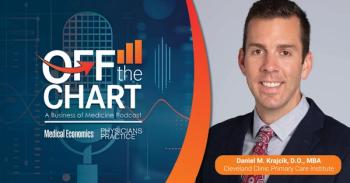
Workplace violence is driving physicians and nurses to the exit, new report shows
Key Takeaways
- Rising workplace violence in healthcare is prompting many workers to consider leaving their jobs, with 45% likely to do so within a year.
- Nurses and women report higher rates of violence, with nurses twice as likely as physicians to experience physical assault.
Nearly half of health care workers say they’re likely to leave their job within a year, citing safety concerns.
A growing number of U.S. physicians, nurses and medical staff are considering walking away from their jobs due to
The report, published July 23 and dubbed “
Aggression is the norm, not the exception
Verkada surveyed 1,027 front-line health care workers, including physicians, nurses and other staff who frequently interact with patients and families. Seventy-nine percent said they had experienced or witnessed aggressive behavior from patients, while 61% had experienced the same from non-patients.
More than half (54%) said they have personally felt threatened on the job.
“Health care workers dedicate their lives to caring for others, yet our research reveals that we’re not doing enough to protect them,” said Alana O’Grady Lauk, Verkada’s vice president of communications and public affairs. “This is ultimately not just a
Violence exposure isn’t equally distributed, as nurses were twice as likely as physicians to report being physically assaulted (60% vs. 29%). Women consistently reported higher rates of all forms of violence and Gen Z health care workers reported the highest physical assault rates of any generation — 60%, compared to just 19% among Baby Boomers.
Security systems lacking in many practices
Despite rising violence, 77% of workers said their organization hasn’t increased security in the past year. Forty-one percent described their current security measures as “minimal,” and basic systems like alarm buttons, visitor ID checks or de-escalation training are missing in many settings, especially in physician practices.
Among those who work in doctors’ offices, 61% said their workplace lacks panic buttons, and 44% said they don’t have any access control or security badge systems.
Considering this, health care workers overwhelmingly support increased security investments. Eighty-two percent said they want their employer to enhance safety measures and 84% said they’d feel safer if those investments were made. On-site security guards, panic buttons and weapon detection technology topped the list of desired protections.
Patient care and workforce retention at risk
The impact of workplace violence extends far beyond individual safety. More than half of respondents said safety concerns are deterring people from entering the profession altogether. Nurses were the most likely to say they plan to leave in the next year (50%), followed by physicians (39%).
Burnout is also worse in facilities with minimal security, the data shows. Sixty-six percent of workers in those environments said they feel mentally or emotionally exhausted by their jobs, and nearly three in four said it takes a toll on their mental health.
“For an industry that's already facing critical staffing shortages, this kind of impact can't be left unaddressed,” the report concluded. “Enhanced security measures are not just operational improvements — they are essential investments in the health care workforce and, ultimately, in the quality of care provided to patients across America.
Newsletter
Stay informed and empowered with Medical Economics enewsletter, delivering expert insights, financial strategies, practice management tips and technology trends — tailored for today’s physicians.















